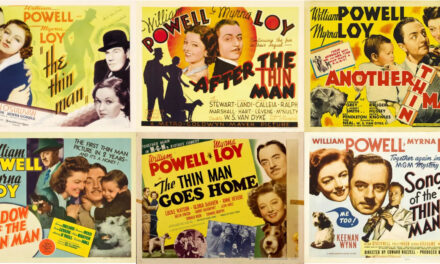
The Irving G. Thalberg Memorial Award Winners: A Complete Guide
The Irving G. Thalberg Memorial Award honors lifetime creative achievement by film producers. It is one of the highest honors that an individual can receive from the American film community. Unlike the Oscars®, the Thalberg Award is not presented every year.
The recipients of the award are recognized for the high quality of their creative contributions to the movie business. Since the Thalberg Award is for movie production, the creativity that is celebrated also means box office success and contributions to the business of movies.
Who Was Irving Thalberg?
The award, established in 1937, is named for Irving Thalberg (1899–1936), the “boy wonder” who headed the Production Division of Metro-Goldwyn-Mayer from 1924 until his untimely death in 1936 at the age of 37.
Thalberg got his start in the movie business at Universal Studios before he was 20 years old. Early on, studio president Carl Laemmle delegated most production decisions to Thalberg. Among the hits that Thalberg produced at Universal was The Hunchback of Notre Dame (1923), starring Lon Chaney.
At MGM, Thalberg personally supervised the studio’s top movies (usually without screen credit), including Grand Hotel (1932), Red Dust (1932), China Seas (1935), A Night at the Opera (1935), Mutiny on the Bounty (1935), and Camille (1936). He launched and nurtured the careers of numerous stars, including Norma Shearer, who became his wife.

Irving Thalberg, 1929. (National Photo Company, Public domain, via Wikimedia Commons)
With Thalberg in charge of production, MGM became the premiere studio of its day, with a reputation for sophisticated and commercially successful films. It was the only Hollywood studio to consistently make a profit throughout the Great Depression.
What Is the Thalberg Award and Who Is Eligible for It?
According to the Academy’s official description of the award, honorees are “creative producers whose bodies of work reflect a consistently high quality of motion picture production.” The Academy’s Board of Governors selects the recipients of the award and each year has discretion whether or not to name an honoree. To date, the Thalberg Award has been presented 39 times to 38 different individuals.
In earlier years, the winners of the Thalberg Award continued to be eligible for subsequent awards, and in fact, two honorees, Darryl F. Zanuck and Hal B. Wallis, received the award more than once. Beginning with the 1962 (35th) awards, the Board of Governors voted that no person could win multiple Thalberg Awards.
As of 2009, the Thalberg Award is presented at the annual Governors Awards dinner in November rather than at the Academy Awards ceremony where the competitive Oscars are awarded.
The Thalberg Award trophy itself is not a traditional Oscar statuette, but rather a stylized bronze bust of Thalberg. The current version—the third—was created by sculptor Gualberto Rocchi in 1957 and first presented to William Wyler, the 1966 Thalberg Award recipient.
Here are all the winners of the Irving G. Thalberg Memorial Award, with short summaries of their careers and the work for which they were recognized. In keeping with the practice of the Academy, the year listed is the awards year, which, before 2009, is the year before the award was presented.
Darryl F. Zanuck, 1937, 1944, and 1950
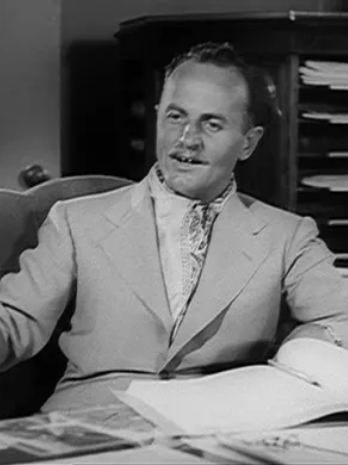
Producer Darryl F. Zanuck in the trailer for "The Grapes of Wrath" (1940). (Public domain, via Wikimedia Commons)
Executive, producer, writer, director, actor
Darryl F. Zanuck (1902–1979) enjoyed a prolific career spanning 50 years. He got his start in the movie business as a writer and sold an early story to Irving Thalberg in 1922. He was head of production for Warner Bros. for several years until 1933, when he co-founded Twentieth Century Pictures, which merged with Fox Film Corporation to become 20th Century-Fox in 1935.
Three of his movies won Best Picture Oscars—How Green Was My Valley (1941), Gentleman’s Agreement (1947), and All About Eve (1950)—and 12 others were nominated. Zanuck is the only person to receive three Thalberg Awards.
Hal B. Wallis, 1938 and 1943

Hal B. Wallis in a studio portrait. (IMDb)
Producer
Working first at Warner Bros. and later as an independent, Hal B. Wallis (1898–1986) produced almost 400 movies over his 50-year career. Nineteen of his films were nominated for Best Picture—the most nominations for any producer to date (although for some he is uncredited).
His most notable movies include Best Picture winner Casablanca (1942)—for which he was uncredited, with Jack Warner accepting the Oscar, The Maltese Falcon (1941), Yankee Doodle Dandy (1942), Becket (1964), and True Grit (1969). He also produced many successful Elvis Presley movies. Wallis is the only person other than Darryl Zanuck to win more than one Thalberg Award.
David O. Selznick, 1939
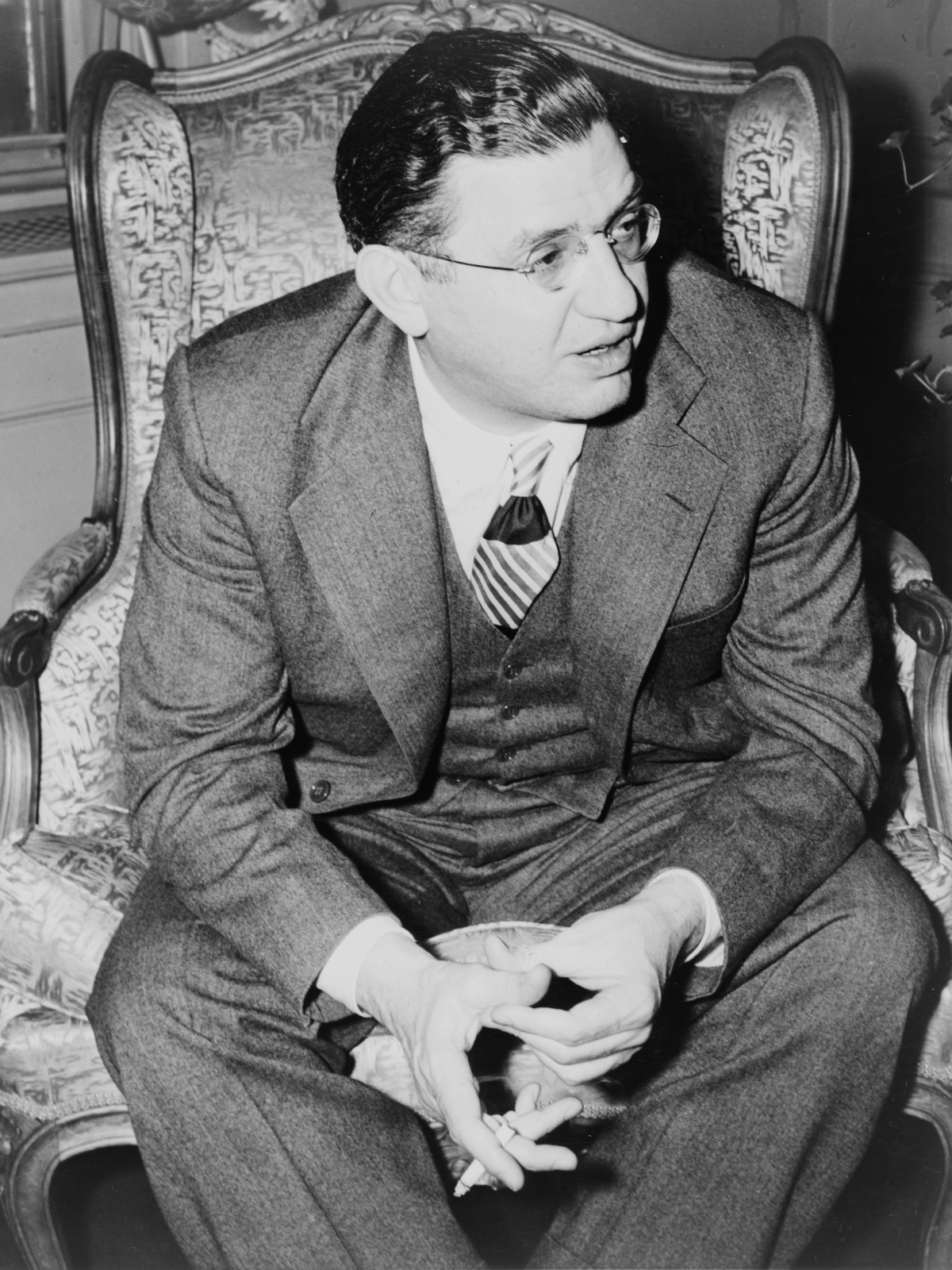
David O. Selznick, 1941. (New York World-Telegram and the Sun staff photographer, Public domain, via Wikimedia Commons)
Producer, writer
David O. Selznick (1902–1965) worked at MGM, RKO Pictures, and Paramount Pictures before starting his own studio, Selznick International Pictures, in 1935. The studio produced many successful, classic movies. He is best known for the 1940 Best Picture and multiple Oscar winner Gone With the Wind. In 1941, Selznick’s studio won its second consecutive Best Picture Oscar for Rebecca, directed by Alfred Hitchcock.
Six more of Selznick’s movies were nominated for Best Picture: Viva Villa! (1934), David Copperfield (1935), A Tale of Two Cities (1936), A Star Is Born (1938), Since You Went Away (1944), and Hitchcock’s Spellbound (1945). Selznick was the executive producer of 1933’s King Kong with Fay Wray, and he had another hit with Duel in the Sun (1946), starring his future wife Jennifer Jones.
Walt Disney, 1941
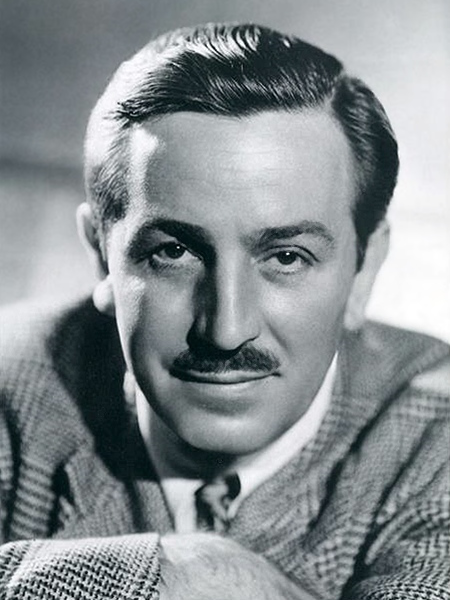
Walt Disney in a 1946 publicity photo. (Boy Scouts of America, Public domain, via Wikimedia Commons)
Producer, director, screenwriter, animator, voice actor
Walt Disney (1901–1966) is best known for his innovations in animation and for the creation of the Disneyland and Walt Disney World theme parks. He co-founded the studio Walt Disney Productions and was the original voice of his famous cartoon creation, Mickey Mouse.
He holds the record for the most Academy Award nominations (59) and the most Oscar wins (22), all for short subjects and documentaries. Besides the Thalberg Award, Disney received three other honorary awards for his work in animation.
Sidney Franklin, 1942

Sidney Franklin in a studio portrait. (IMDb)
Director, producer, occasional writer and actor
Sidney Franklin (1893–1972) directed some 71 movies and produced 18. Among his best known is Mrs. Miniver (1942), which won Oscars for Best Picture, Directing (William Wyler), Actress (Greer Garson), Supporting Actress (Teresa Wright), and Screenplay. It was the first Best Picture winner to get nominations in all four acting categories, as Walter Pidgeon and Henry Travers were nominated for Best Actor and Supporting Actor, respectively.
As a director, Franklin’s greatest success was The Good Earth (1937), for which he received a Directing nomination and for which Luise Rainer won the Oscar for Best Actress.
Samuel Goldwyn, 1946
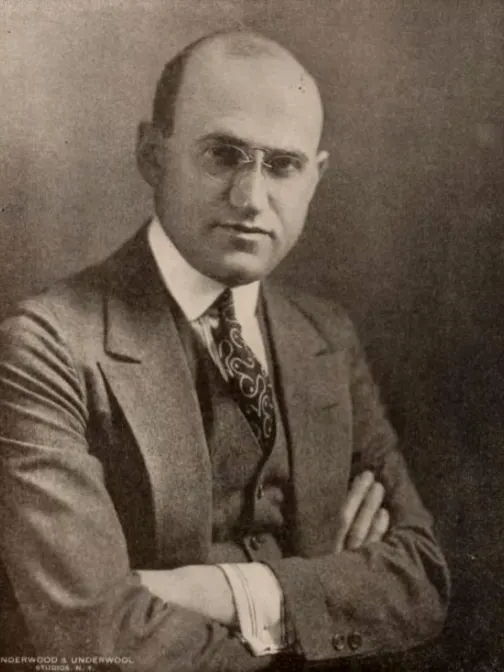
Samuel Goldwyn portrait, 1919. (Underwood & Underwood, Public domain, via Wikimedia Commons)
Producer, studio executive
Samuel Goldwyn (1879–1974) got his start in the movie business in 1913 when he and several partners, including Cecil B. DeMille, formed The Jesse L. Lasky Feature Play Company, which in 1914 produced The Squaw Man, the first feature to be filmed in Hollywood. In 1916 he set up Goldwyn Pictures Corporation, which later became part of Metro-Goldwyn-Mayer, but only after Goldwyn had left and set up the independent Samuel Goldwyn Studio. He produced numerous films over the next 35 years, with six receiving Oscar nominations for Best Picture. In the same year that he won the Thalberg Award, his movie The Best Years of Our Lives (1946) was named Best Picture and won six other Academy Awards.
Jerry Wald, 1948

Jerry Wald. (MUBI)
Producer, screenwriter
Jerry Wald (1911–1962) worked in radio as well as motion pictures. He produced some 65 movies over two decades, including four Best Picture nominees: Mildred Pierce (1945), Johnny Belinda (1948), Peyton Place (1957), and Sons and Lovers (1960). Wald also produced the telecasts of the 1957 and 1958 Academy Award ceremonies.
Arthur Freed, 1951

Arthur Freed in his office. (IMDb)
Producer, lyricist
Early in his career, Arthur Freed (1894–1973) sang with the Marx Brothers on the vaudeville circuit. He began to write songs and produce musical shows and was eventually hired by MGM. After working as an uncredited associate producer on The Wizard of Oz (1939), he became the head of a production unit at MGM. Freed produced some 50 popular and classic musicals, including An American in Paris (1951) and Gigi (1958), both of which won the Oscar for Best Picture. His most famous movie musical is probably Singin’ in the Rain (1952), which won no Academy Awards.
Cecil B. DeMille, 1952

Cecil B. DeMille. (Encyclopedia Britannica, Inc.)
Director, producer
Cecil B. DeMille (1881–1959) began his show business career as an actor on Broadway, where he also produced and directed plays. Moving to motion pictures, he directed the first feature film made in Hollywood, The Squaw Man (1914). He became immensely popular in the 1920s for his Biblical epics The Ten Commandments (1923) and The King of Kings (1927), along with numerous other films.
From 1936 to 1944, DeMille hosted the popular radio anthology series Lux Radio Theatre. He appeared as himself in several films, notably Billy Wilder’s Sunset Boulevard (1950) with Gloria Swanson. DeMille earned an Academy Award nomination for directing the 1952 spectacular The Greatest Show on Earth, which won the Oscar for Best Picture. His 1956 remake of The Ten Commandments was also nominated for Best Picture.
George Stevens, 1953
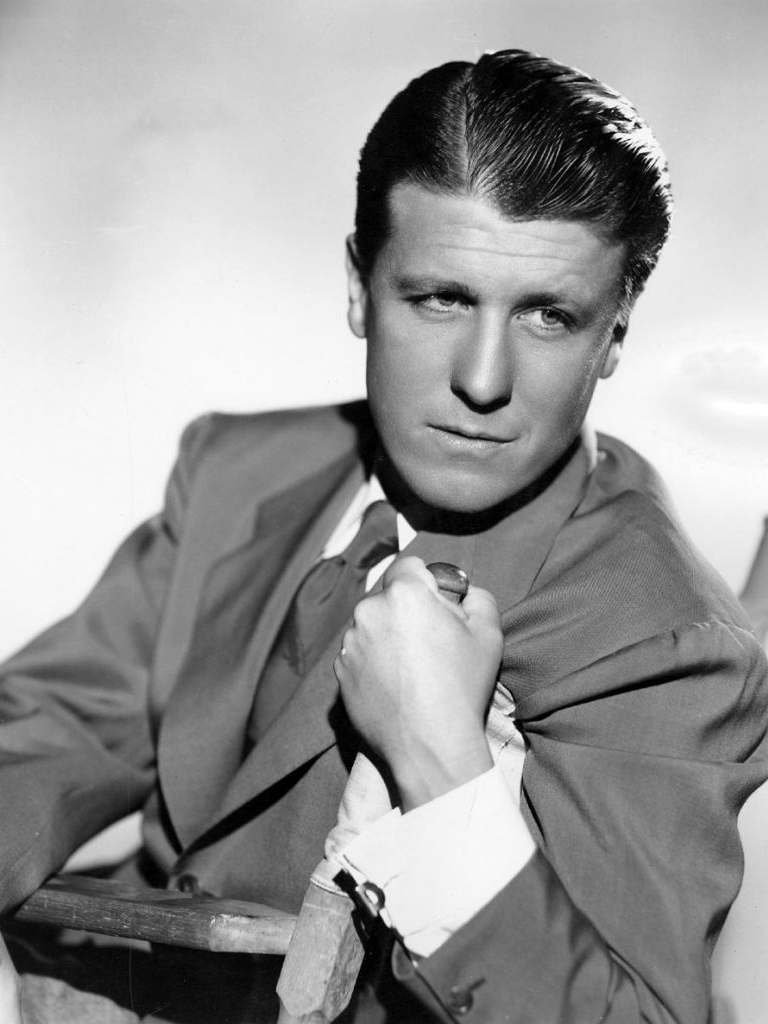
George Stevens. (PBS American Masters)
Producer, director, screenwriter, cinematographer
George Stevens (1904–1975) first worked in the movie business as a cameraman on Laurel and Hardy shorts. He began directing films in the mid-1930s, notably directing Alice Adams with Katharine Hepburn in 1935. He was nominated for Best Director for his 1943 romantic comedy The More the Merrier, but that same year he joined the U.S. Army Signal Corps and headed a film unit for the Allies in Europe. Stevens shot footage of the D-Day invasion, the liberation of Paris, and the crossing of the Elbe, as well as footage of concentration camps that was used in the Nuremberg Trials.
After the war, he made classic, mostly serious films, including four for which he garnered Best Picture and Best Director nominations: A Place in the Sun (1951), Shane (1953), Giant (1956), and The Diary of Anne Frank (1959). None won the award for Best Picture, but he won the Best Director Oscar for both A Place in the Sun and Giant.
E. Maurice "Buddy" Adler, 1956
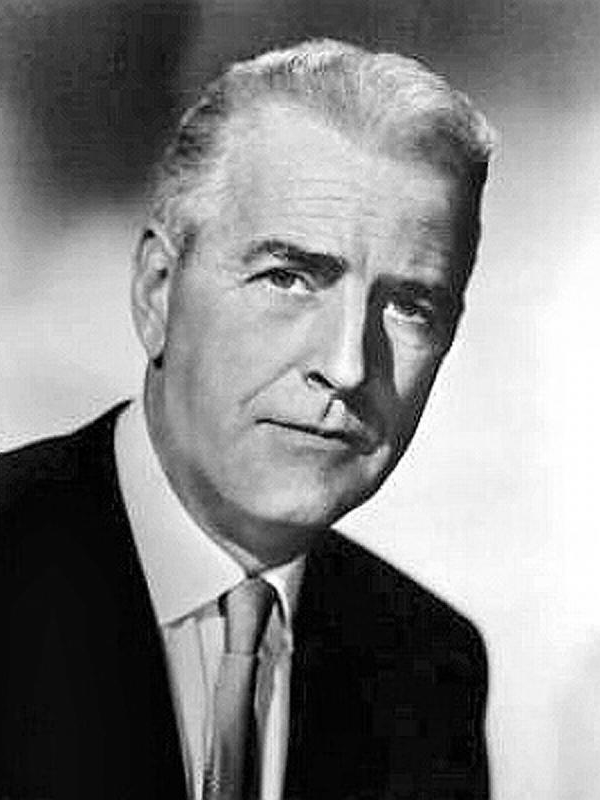
Buddy Adler. (IMDb)
Producer, executive
Buddy Adler (1909–1960) started as a writer of shorts for MGM in the 1930s. He joined the Army Signal Corps in World War II. After the war, Adler became a producer, first at MGM, then at Columbia Pictures, and finally at 20th Century-Fox, where he succeeded Darryl F. Zanuck as Head of Production in 1956. At Fox, he produced several very popular films, including Bus Stop with Marilyn Monroe (1956), South Pacific (1958), and The Inn of the Sixth Happiness (1959). His most honored film is From Here to Eternity (1953), which won Best Picture and seven other Oscars and received nominations for five more.
Jack L. Warner, 1958
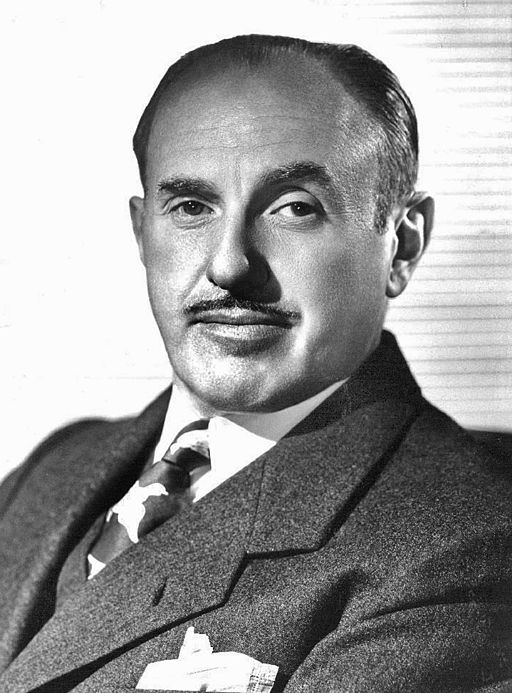
Jack Warner, 1955. (Press photo, Public domain, via Wikimedia Commons)
Producer, studio president
Jack L. Warner (1892–1978) got his start showing and distributing movies with four of his brothers in Ohio and Pennsylvania. They moved to New York and then to California, where they had some success with the Rin Tin Tin franchise in the 1920s. In 1927, Warner Bros. revolutionized the movie business with the first feature-length “talkie,” The Jazz Singer. During the 1930s, Warner’s studio became known for its social dramas, including The Public Enemy with James Cagney (1931) and I Am a Fugitive from a Chain Gang with Paul Muni (1932), and swashbucklers like Captain Blood, starring Errol Flynn (1935).
Warner was passionately anti-Nazi, and during World War II the studio produced numerous movies about the war as well as patriotic musicals. Warner continued working until the early 1970s and was involved in the production of almost 300 movies in all. His 1964 movie adaptation of My Fair Lady won the Oscar for Best Picture.
Stanley Kramer, 1961
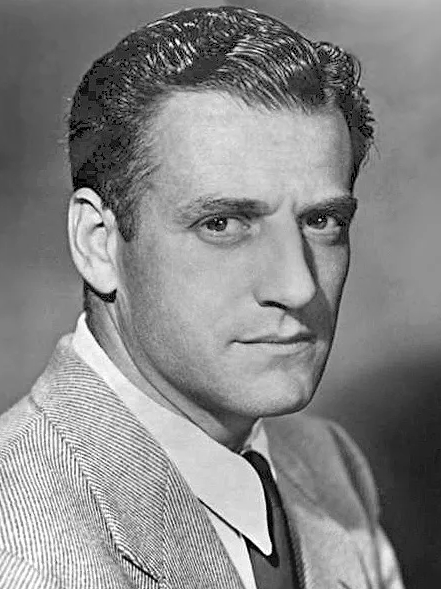
Stanley Kramer, circa 1955. (Studio, Public domain, via Wikimedia Commons)
Director, producer
Beginning in 1941, Stanley Kramer (1913–2001) was a production assistant for 20th Century-Fox. In 1948 Kramer and several partners organized an independent production company, Screen Plays Inc. Their second movie, Champion (1949), was a success, winning one Oscar and earning six additional nominations. Kramer’s 1952 film High Noon received seven Oscar nominations, including Best Picture, winning in four categories. Kramer then moved to Columbia Pictures, where most of his movies were commercially unsuccessful, but his last, The Caine Mutiny (1954), was a box office success and was nominated for Best Picture.
After The Caine Mutiny, Kramer returned to his independent production company as a director. Four more of his films were nominated for Best Picture: The Defiant Ones (1958), Judgment at Nuremberg (1961), Ship of Fools (1965), and Guess Who’s Coming to Dinner (1967). Kramer also earned nominations for Best Director for three of the four.
Sam Spiegel, 1963
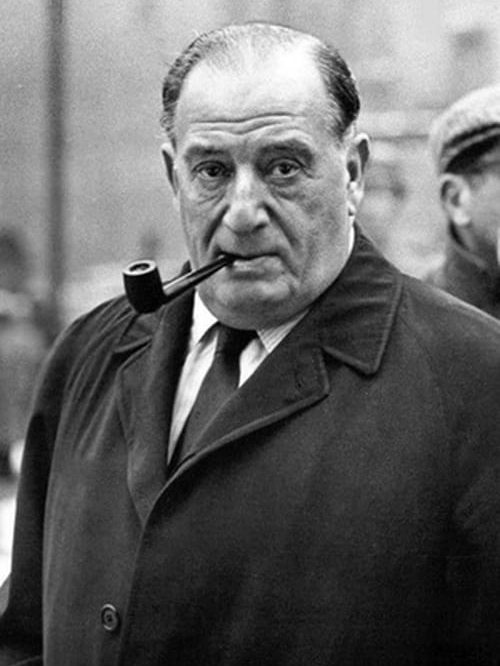
Sam Spiegel. (TMDB)
Independent film producer
Born in Austria-Hungary, Sam Spiegel (1901–1985) worked briefly in Hollywood in the 1920s, then in Berlin producing German and French adaptations of American movies. After fleeing Nazi Germany, he immigrated to the United States by way of Mexico. In 1951 (as S.P. Eagle) he produced The African Queen, for which Humphrey Bogart won his only Oscar.
Three of Spiegel’s films won the Academy Award for Best Picture and multiple additional Oscars: 1954’s On the Waterfront (winner of eight Oscars in all), 1957’s The Bridge on the River Kwai (seven Oscars), and 1962’s Lawrence of Arabia (seven Oscars). A fourth movie, Nicholas and Alexandra (1971), earned a Best Picture nomination. Spiegel was a passionate supporter of Israel and the benefactor of the Sam Spiegel Film and Television School in Jerusalem.
William Wyler, 1965
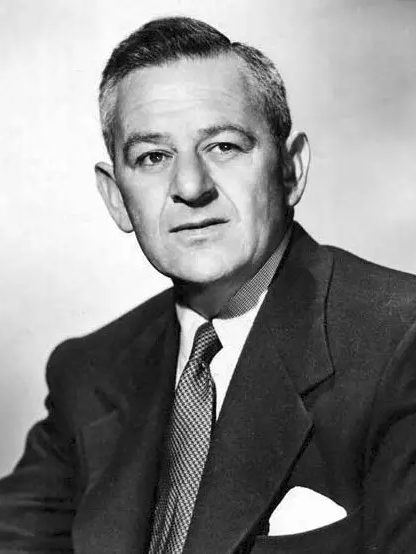
William Wyler publicity portrait, circa 1945. (Film studio, Public domain, via Wikimedia Commons)
Director, producer, screenwriter
William Wyler (1902–1981) began working in Hollywood at Universal in 1923, becoming the studio’s youngest director in 1925. By the 1930s, Wyler had become one of Universal’s strongest talents, producing numerous successful and critically acclaimed movies, including Dodsworth (1936), for which he earned his first Best Director nomination. After three more consecutive nominations, he won the Best Director award for 1942’s Mrs. Miniver.
Wyler directed documentaries for the U.S. Army Air Forces during World War II. After the war, he won his second Academy Award for Best Director, for The Best Years of Our Lives (1946), which was also named Best Picture. He won a third Oscar for directing Ben-Hur (1959). He received 12 Best Director nominations in all, more than any other director, and two Best Picture nominations for movies he produced.
Robert Wise, 1966

Robert Wise at the 53rd Annual Directors Guild Awards, 2001 (S. Bukley)
Producer, director, film and sound effects editor
Robert Wise (1914–2005) began as a music and sound editor at RKO in the 1930s, but he soon moved into film editing. He received an Oscar nomination for Film Editing for Orson Welles’s Citizen Kane (1941). The following year he got his start in directing, working as an uncredited assistant director on Welles’s The Magnificent Ambersons.
Over the next several decades, Wise directed some 40 movies in multiple genres. He received his first nomination for Best Director for I Want to Live! (1958). He produced and directed West Side Story (1961) and The Sound of Music (1965), winning Best Picture and Best Director Oscars for both. His anti-war film The Sand Pebbles (1966) was also nominated for Best Picture. Among his many other awards, Wise received a National Medal of Arts in 1992 and a Life Achievement Award from the American Film Institute in 1998.
Alfred Hitchcock, 1967
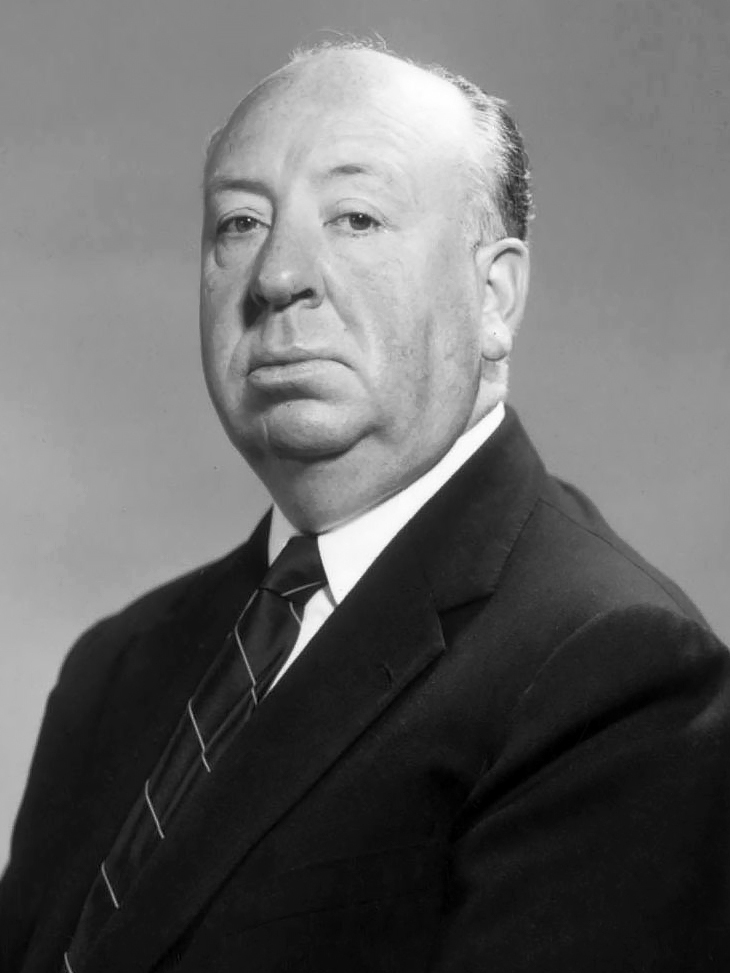
Alfred Hitchcock studio publicity photo. (Ante Brkan, Public domain, via Wikimedia Commons)
Director, producer
In a career spanning more than 60 years, Alfred Hitchcock (1899–1980) directed over 50 feature films, first in England and then in Hollywood, becoming famous for his complex psychological thrillers. Beginning in 1920 as a title-card designer for silent films, he soon became a director and had his first commercial and critical success with the thriller The Lodger: A Story of the London Fog (1927). In 1929, Hitchcock directed what is recognized as the first British sound film,Blackmail. He had multiple successes in the 1930s, including The Man Who Knew Too Much (1934), The 39 Steps (1935), and The Lady Vanishes (1939).
Hitchcock then moved to Hollywood, where his first film, Rebecca (1940), won the Oscar for Best Picture and earned him a nomination for Best Director. He went on to direct numerous films that have become classics and received four more Best Director nominations, for Lifeboat (1944), Spellbound (1945), Rear Window (1954), and Psycho (1960). Hitchcock received an AFI Life Achievement Award in 1979.
Ingmar Bergman, 1970
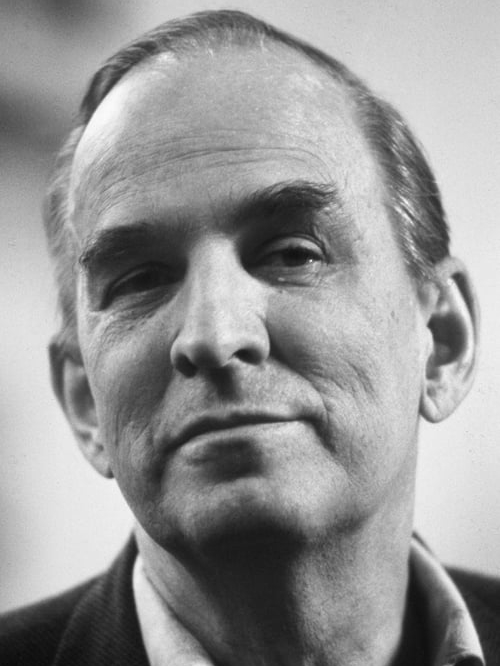
Ingmar Bergman. (TMDB)
Director, screenwriter, producer
Swedish filmmaker Ingmar Bergman (1918–2007) began his career in 1941 rewriting scripts but soon moved to screenwriting and directing. He won international acclaim in the 1950s with Smiles of a Summer Night (1955), The Seventh Seal (1957), and Wild Strawberries (1957).
Bergman influenced many other filmmakers, with many considering his 1966 film Persona to be his masterpiece. He received six Oscar nominations for Best Original Screenplay, three for Best Director, and one for Best Picture (Cries and Whispers, 1974). He won three Oscars for Best Foreign Film, for The Virgin Spring (1960), Through a Glass Darkly (1961), and Fanny and Alexander (1983). Bergman also did extensive work for television and the stage.
Lawrence Weingarten, 1973
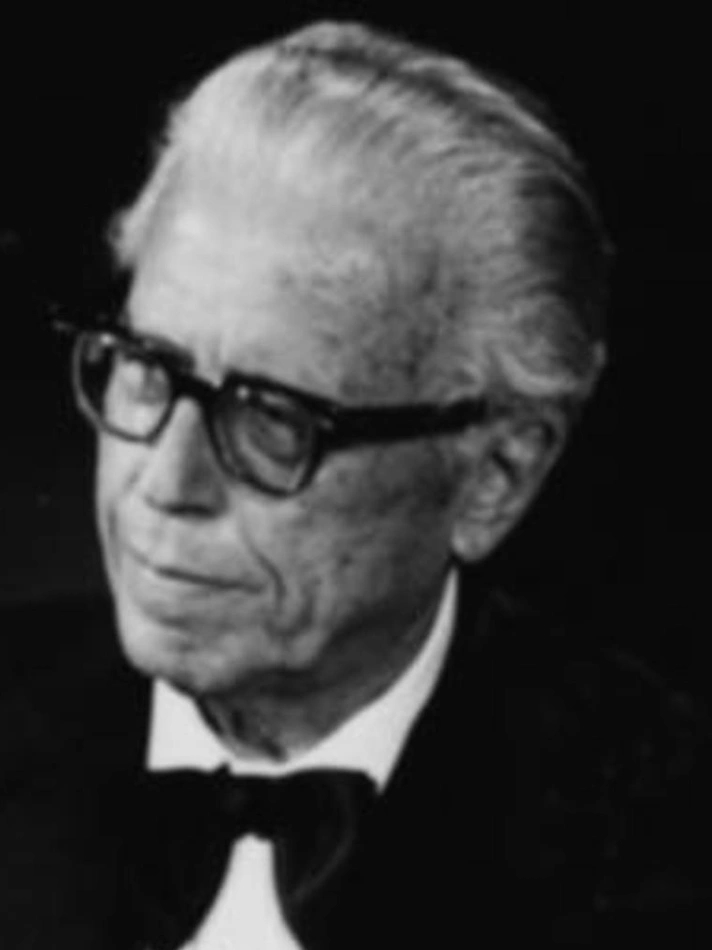
Lawrence Weingarten. (MUBI)
Producer
Lawrence Weingarten (1897–1975) received his first movie credit as an actor in the short comedy Bitter Sweet (1916), but this turned out to be his only acting credit. He worked as a studio publicist for the next few years, then joined MGM in 1924 as an assistant producer under Irving Thalberg. His first producing credit came on 1929’s Broadway Melody, which was MGM’s first musical and the first sound film to win the Oscar for Best Picture.
Weingarten went on to produce nearly 40 movies over the next four decades. Among his most popular films was Adam’s Rib (1949), with Katharine Hepburn and Spencer Tracy. His Cat on a Hot Tin Roof (1959) was nominated for all of the so-called “Big Five” Oscars as well as for Best Cinematography.
Mervyn LeRoy, 1975
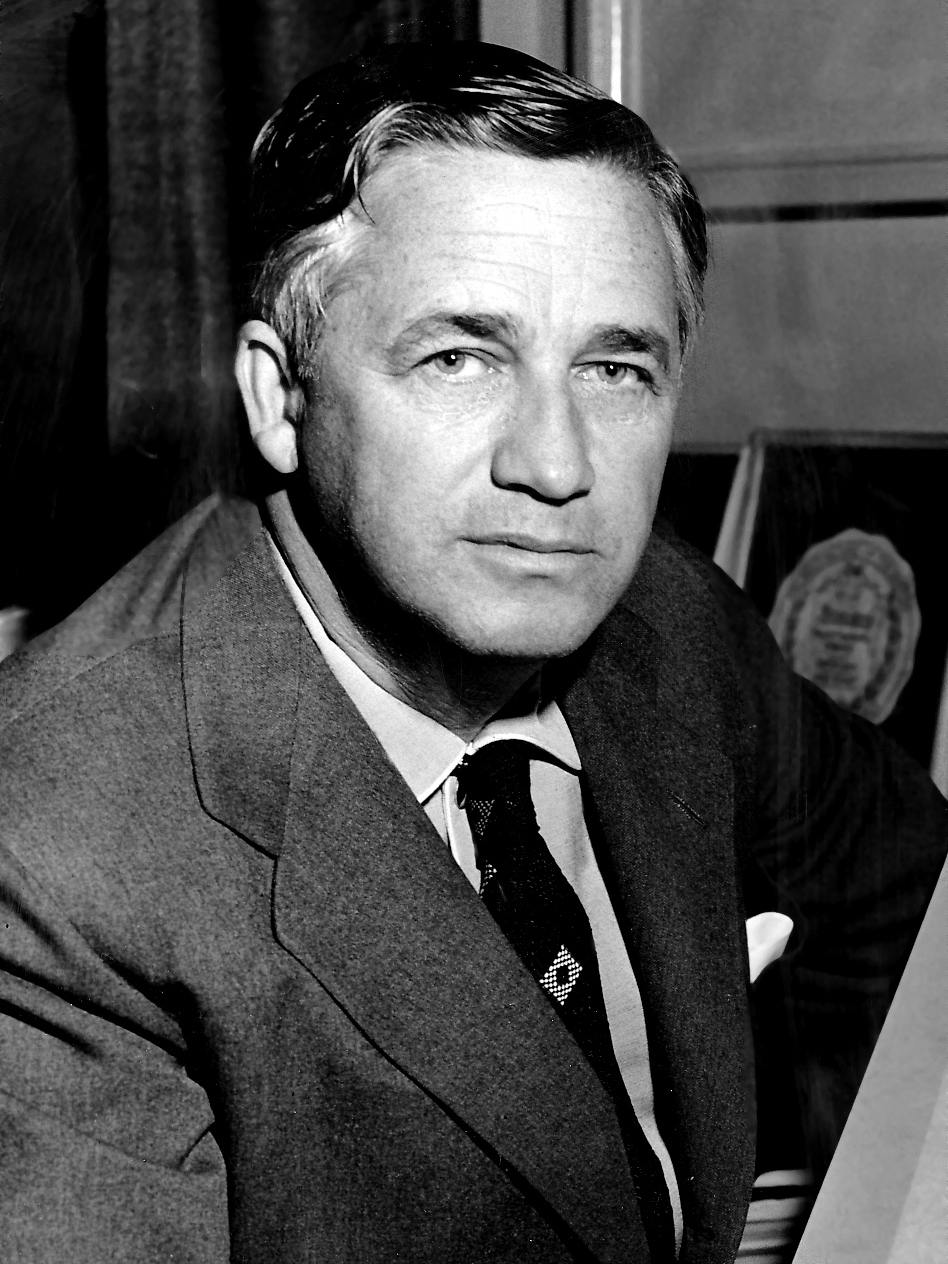
Promotional photo of Mervyn LeRoy, 1958. (Public domain, via Wikipedia)
Director, producer, occasional actor
Mervyn LeRoy (1900–1987) performed in vaudeville before entering the movie business. After a series of miscellaneous jobs, he became a director in 1927 and had a string of profitable movies for Warner Bros. He had a smash hit with the gangster film Little Caesar (1931), which made Edward G. Robinson a star. He also directed I Am a Fugitive from a Chain Gang (1932), which won Best Picture. When Irving Thalberg died, LeRoy became head of production at MGM. In 1939, he produced The Wizard of Oz, which was nominated for Best Picture but was not greatly successful at the box office.
After The Wizard of Oz, LeRoy returned primarily to directing. He had numerous hits for MGM, including Random Harvest (1942), for which he got a Best Director Oscar nomination, and Quo Vadis (1951), which was nominated for Best Picture. In the 1950s he set up an independent production company and had continued success with such films as Best Picture nominee Mister Roberts (1955).
Pandro S. Berman, 1976

Pandro S. Berman studio portrait. (MUBI)
Producer
Pandro S. Berman (1905–1996) began his career in the 1920s as an assistant director at Universal, then moved to RKO in 1930. From 1931 to 1939, he was the supervising producer at RKO. His RKO movies included Ginger Rogers and Fred Astaire musicals, Katharine Hepburn comedies, and classics such as the 1939 films The Hunchback of Notre Dame and Gunga Din.
In 1940 Berman moved to MGM, where he remained until 1963, producing successful movies that included National Velvet with Elizabeth Taylor (1944) and Blackboard Jungle (1955). Six of Berman’s movies received Academy Award nominations for Best Picture: The Gay Divorcee (1934), Alice Adams (1935), Top Hat (also 1935), Stage Door (1937), Father of the Bride (1950), and Ivanhoe (1952).
Walter Mirisch, 1977
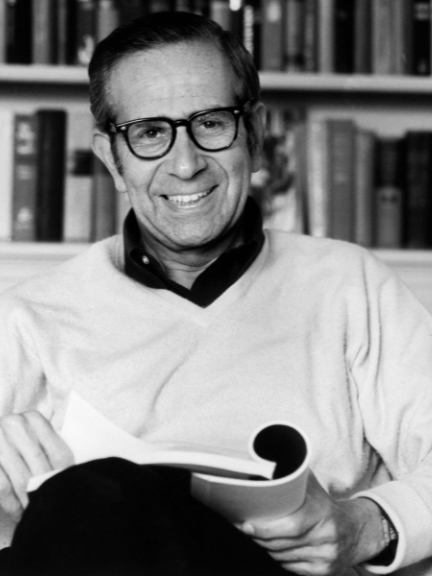
Walter Mirisch. (Wisconsin Film Festival, via IMDb)
Producer, executive
Walter Mirisch (1921–2023) entered the movie business by working at movie theaters. After getting degrees from the University of Wisconsin and Harvard Business School, he entered the production end of the business at Monogram Pictures, producing mostly low-budget movies like Bomba, The Jungle Boy. His success led to his promotion to executive producer at Monogram’s Allied Artists division. In 1957, he formed The Mirisch Corporation with brothers Harold and Marvin. Among the company’s numerous hits are Some Like It Hot (1959), The Magnificent Seven (1960), The Great Escape (1963), The Pink Panther (1963), Best Picture nominee The Russians Are Coming, The Russians Are Coming (1966), and Best Picture winners The Apartment (1960) and West Side Story (1961).
Mirisch himself received a Best Picture Oscar as the producer of In the Heat of the Night (1967). He also received numerous other honors and awards, including the Cecil B. DeMille Award from the Hollywood Press Association and the Jean Hersholt Humanitarian Award from the Academy.
Ray Stark, 1979

Ray Stark. (MUBI)
Independent producer
Ray Stark (1915–2004) began his career in the entertainment business as a publicist and literary agent. After serving in the Navy in World War II, he shifted his focus to representing Hollywood actors as a talent agent at Famous Artists.
In 1957, Stark co-founded Seven Arts Productions, which produced films for release by other studios. His first screen credit came in 1960 as executive producer of The World of Suzie Wong, which introduced audiences to Chinese-American actress Nancy Kwan. In 1964, he produced The Night of the Iguana, which was nominated for four Oscars and five Golden Globe Awards.
Stark co-founded Rastar Productions in 1966. The company’s first release, Funny Girl (1968), starring Barbra Streisand in her screen debut, was based on the life story of Stark’s mother-in-law, Fanny Brice. Stark had produced the hit 1964 Funny Girl Broadway musical and signed the young singer-actress Streisand for the lead role. The film was nominated for Best Picture and Streisand won the Oscar for Best Actress in a Leading Role.
Stark was instrumental in bringing more than 200 films to the screen, although he accepted a producer’s credit on only a fraction of them. He received his second Best Picture nomination for The Goodbye Girl (1977). In addition to receiving the Thalberg Award, Stark was honored in 1999 by the Producers Guild of America with its David O. Selznick Achievement Award in Theatrical Motion Pictures.
Albert R. "Cubby" Broccoli, 1981
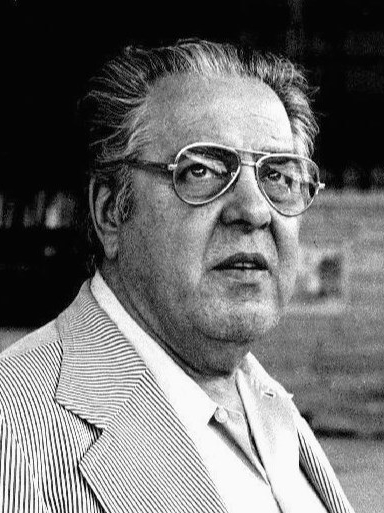
Albert "Cubby" Broccoli, 1976. (Colin Dangaard, Public domain, via Wikimedia Commons)
Producer
Albert R. “Cubby” Broccoli (1909–1996) entered the movie business in 1938 as an assistant director for 20th Century-Fox. After serving in the U.S. Navy during World War II, Broccoli returned to Hollywood, where he worked as an agent and in several film production roles. In 1951, he moved to England and set up Warwick Productions with partner Irving Allen. Warwick produced a string of Anglo-American action movies during the 1950s.
In 1960, Broccoli left Warwick to form EON Productions with Harry Saltzman. They produced the hugely successful James Bond series, beginning with Dr. No in 1962. In 1976, the partners split up and Broccoli took over sole rights to the James Bond series. He continued to be actively involved in producing the James Bond movies through Licence to Kill (1989).
Steven Spielberg, 1986
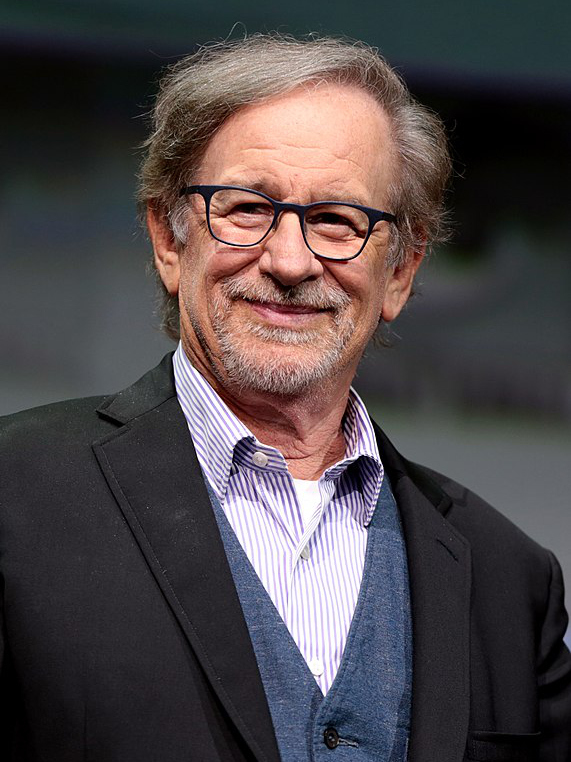
Steven Spielberg, 2017. (Gage Skidmore, CC BY-SA 3.0, via Wikimedia Commons)
Director, screenwriter, producer, studio executive, video game designer
Steven Spielberg (b. 1946) began his career in the movie business in the 1960s as an unpaid intern at Universal Studios. On the strength of his 1968 short film, Amblin’, Universal signed him to a television directing contract. After directing a number of successful TV episodes, he directed the highly praised television movie Duel (1971). Spielberg’s debut theatrical feature was The Sugarland Express (1974). The following year, he became a household name as the director of the blockbuster Jaws.
Spielberg has gone on to direct more than 40 feature films to date and has been involved in the production of well over 150 film and TV projects, primarily through the production company Amblin Entertainment that he formed in 1981 with partners Kathleen Kennedy and Frank Marshall, and/or through Dreamworks Pictures, which he co-founded in 1994 with Jeffrey Katzenberg and David Geffen.
Spielberg’s films have earned numerous Academy Award nominations. Schindler’s List won the 1994 Oscar for Best Picture, and eleven others have been nominated: E.T. The Extra-Terrestrial (1983), The Color Purple (1986), Saving Private Ryan (1999), Munich (2006), Letters from Iwo Jima (2007), War Horse (2012), Lincoln (2013), Bridge of Spies (2016), The Post (2018), West Side Story (2022), and The Fabelmans (2023). He also won Best Director Oscars for Schindler’s List and Saving Private Ryan and received nominations for seven others. In 2023, The Fabelmans earned him his first nomination for Best Original Screenplay.
Spielberg is considered to be one of the most influential filmmakers of all time. He has received numerous American and international entertainment industry awards, including lifetime achievement awards from the American Film Institute and the Directors Guild of America. He has also been recognized with honorary academic degrees and various civic awards. In 2015, Spielberg was awarded the Presidential Medal of Freedom by President Barack Obama.
Billy Wilder, 1987

Billy Wilder. (MUBI)
Director, producer, screenwriter, artist, journalist
Born in Austro-Hungary, Samuel “Billy” Wilder (1906–2002) worked as a journalist in Berlin before turning to screenwriting. After Adolf Hitler came to power, Wilder moved to Paris and then to the United States, arriving in Hollywood in 1933. He received his first Academy Award nomination as co-screenwriter of Ernst Lubitsch’s screwball comedy Ninotchka (1939), starring Greta Garbo in her first comedic role.
Wilder was successful in multiple genres. His third film as a director, Best Picture nominee Double Indemnity (1944), is often cited as the first real film noir. It earned Wilder Oscar nominations for Best Director and Best Screenplay. The following year, he won in both categories with the drama The Lost Weekend. He was also nominated for an Oscar for the war film Stalag 17 (1953). Wilder won the Best Screenplay Oscar for Sunset Boulevard (1950), and took home three Academy Awards—Best Picture, Best Director, and Best Writing—for The Apartment (1960).
Wilder won six Oscars in all and was nominated for another fifteen, six for directing and nine for writing. He was honored with the AFI Life Achievement Award in 1986.
Richard D. Zanuck and David Brown, 1990
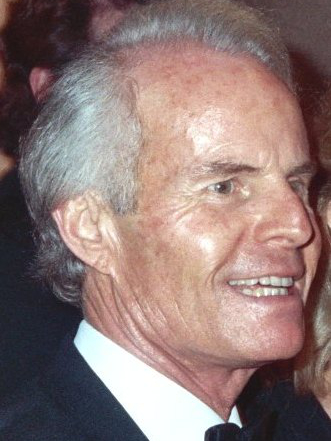
Richard D Zanuck, 1990. (Photo by Alan Light, CC BY 2.0, via Wikimedia Commons)
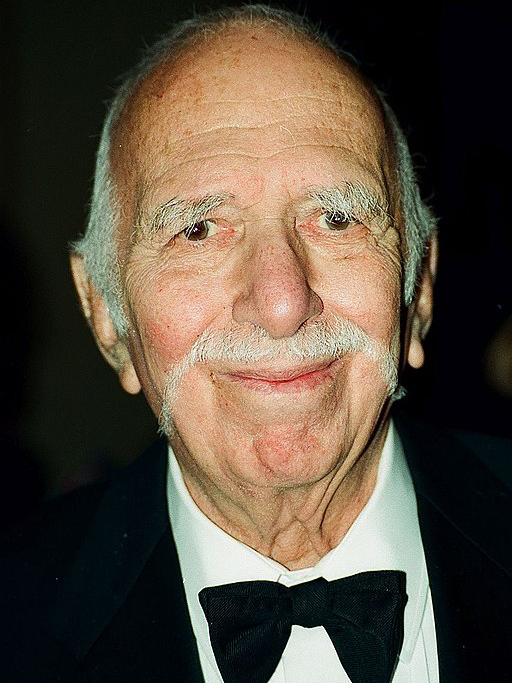
David Brown, 2000. (John Matthew Smith, CC BY-SA 2.0, via Wikimedia Commons)
Film producers and partners
Richard D. Zanuck (1934–2012), the son of Darryl F. Zanuck, started producing movies at Twentieth Century-Fox in 1959. David Brown (1916–2010) worked in journalism before also working at Fox, where the two met in 1965. After Zanuck was fired by his father, he and Brown teamed up in 1972 to form The Zanuck/Brown Company, an independent production company at Universal Pictures. Together they produced two of Steven Spielberg’s early movies, The Sugarland Express (1974) and Jaws (1975), for which they earned a Best Picture Oscar nomination. Other successful movies that they produced together include The Verdict (1982), starring Paul Newman, for which they received another Best Picture nomination, and Cocoon (1985).
Shortly before dissolving their partnership, they produced Driving Miss Daisy (1989), which won four Oscars, including Best Picture, and was nominated for an additional five. (The Best Picture award went to Zanuck and his wife and co-producer, Lili Fini Zanuck; Brown was listed as the executive producer.)
Both men continued producing movies independently after their partnership ended: Zanuck teamed with director Tim Burton on a number of his hits, including Big Fish (2003), Charlie and the Chocolate Factory (2005), and Alice in Wonderland (2010). Among Brown’s post-partnership movies were A Few Good Men (1992) and Chocolat (2000), both of which earned him Best Picture nominations.
George Lucas, 1991

George Lucas. (Nicolas Genin, CC BY-SA 2.0, via Wikimedia Commons)
Producer, screenwriter, director, entrepreneur
George Lucas (b. 1944) graduated from the University of Southern California School of Cinematic Arts. He won a student scholarship from Warner Bros. to study with Francis Ford Coppola, and in 1969, Coppola and Lucas formed the studio American Zoetrope. Its first project was Lucas’s film THX-1138 (1971), a full-length version of a film he had made as a student.
Forming his own company, Lucasfilm Ltd., he wrote and directed his second feature film, American Graffiti (1973), for which he received Best Director and Best Screenplay Oscar nominations. Next came the record-setting blockbuster Star Wars (1977) (later known as Star Wars: Episode IV–A New Hope). Star Wars won seven Academy Awards and received four other nominations, including Best Director and Original Screenplay nominations for Lucas. Lucas went on to write and produce five more Star Wars movies and many spin-off projects. Together with Steven Spielberg, he created the hit Indiana Jones series, beginning with Raiders of the Lost Ark in 1981.
Lucas also formed the very successful special effects studio Industrial Light & Magic and the post-production company Skywalker Sound. He was honored with a Life Achievement Award from the American Film Institute in 2005 and has been a major benefactor of his alma mater, the USC film school. In 2013, President Barack Obama awarded him the National Medal of Arts.
Clint Eastwood, 1994
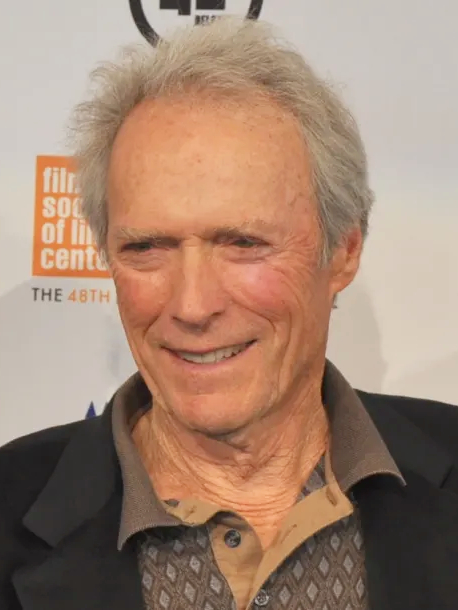
Clint Eastwood, 2009. (Raffi Asdourian, CC BY 2.0, via Wikimedia Commons)
Actor, director, producer, composer
Clint Eastwood (b. 1930) began acting in the 1950s and got his first break as a member of the cast of the TV series Rawhide (1959). In the 1960s he made a name for himself as the star of several Italian “spaghetti westerns” directed by Sergio Leone: A Fistful of Dollars (1964), For a Few Dollars More (1965), and The Good, the Bad, and the Ugly (1966).
In 1971, Eastwood directed his first film, the thriller Play Misty for Me, and also starred as macho cop Harry Callahan in Dirty Harry, the role that made him a superstar. He starred in four Dirty Harry sequels in the ’70s and ’80s, along with movies in various other genres, including the hit comedy Every Which Way But Loose (1978). In 1992, Eastwood produced, directed, and starred in Unforgiven, winning the Oscars for Best Picture and Best Director and receiving a nomination for Best Actor in a Leading Role. He repeated that feat with Million Dollar Baby (2004) and also received Best Picture and Best Director nominations for Mystic River (2003) and Letters from Iwo Jima (2006), as well as a Best Picture nomination for American Sniper (2014).
Although Eastwood has not been as prolific in recent years as he once was, he directed and starred in the critically acclaimed box office hit Gran Turino (2008), as well as Trouble with the Curve (2012), The Mule (2018), and Cry Macho (2021). Among his many awards and honors, Eastwood received an AFI Life Achievement Award in 1996.
Saul Zaentz, 1996
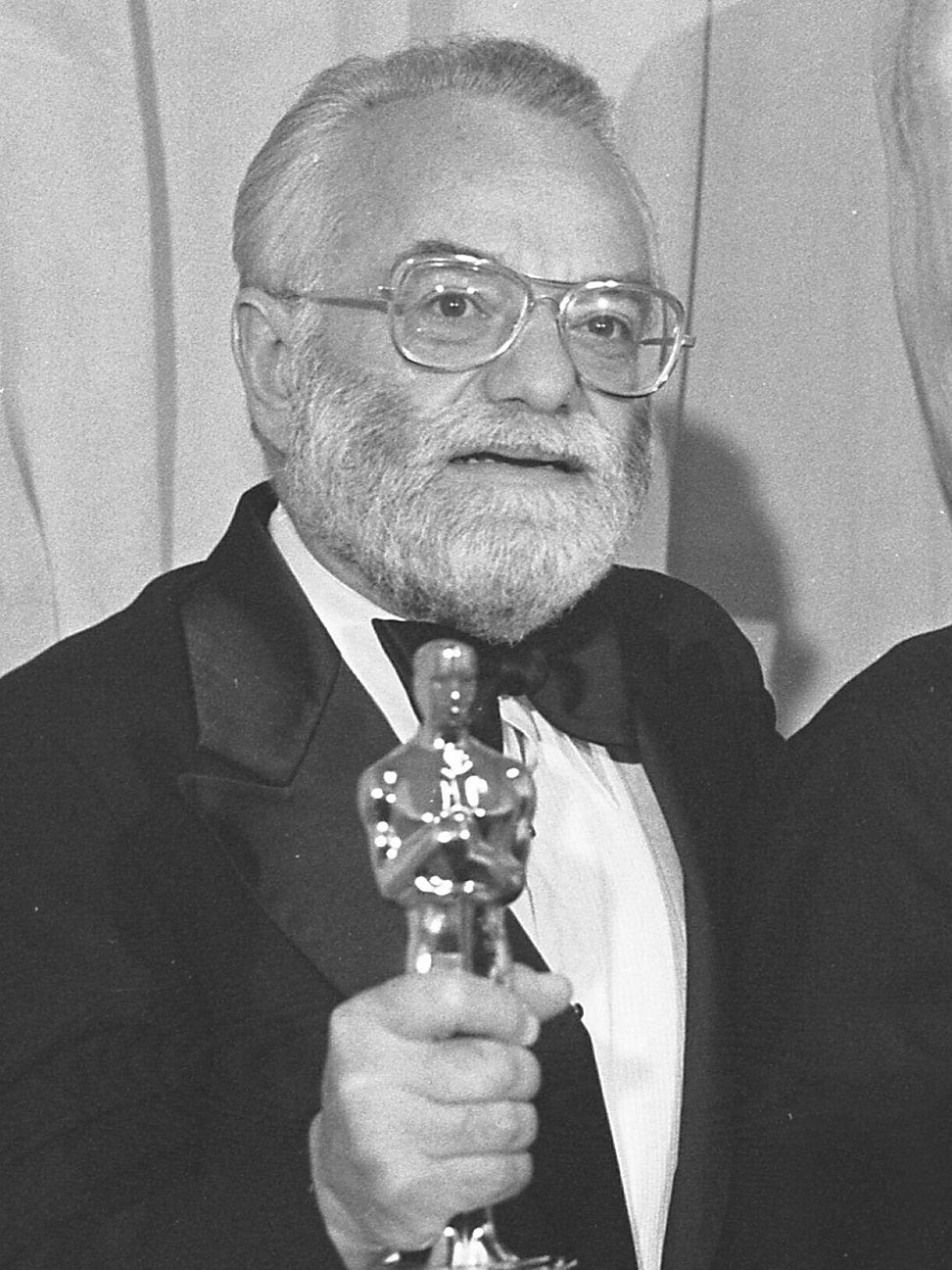
Saul Zaentz with Oscar, 1976. (Los Angeles Times, CC BY 4.0, via Wikimedia Commons)
Independent film producer, record company executive
Saul Zaentz (1921–2014) began his career in the record industry. He joined noted independent jazz label Fantasy Records in 1955 and purchased the company with a group of partners in 1967. In 1975, Zaentz ventured into filmmaking, co-producing One Flew Over the Cuckoo’s Nest with Michael Douglas. The film was the first in 41 years to win all “Big Five” Academy Awards, including the award for Best Picture, shared by Zaentz and Douglas.
In 1984, Saentz produced another hugely successful film, Amadeus, which was named Best Picture, won seven other Oscars, and was nominated for three more. Zaentz had yet another success with The English Patient (1996), which received a total of 12 Academy Award nominations, winning nine, including Best Picture.
Although Saentz produced only nine feature films in his career, his films were nominated for 34 Oscars and won 22, including the three Best Picture awards.
Norman Jewison, 1998
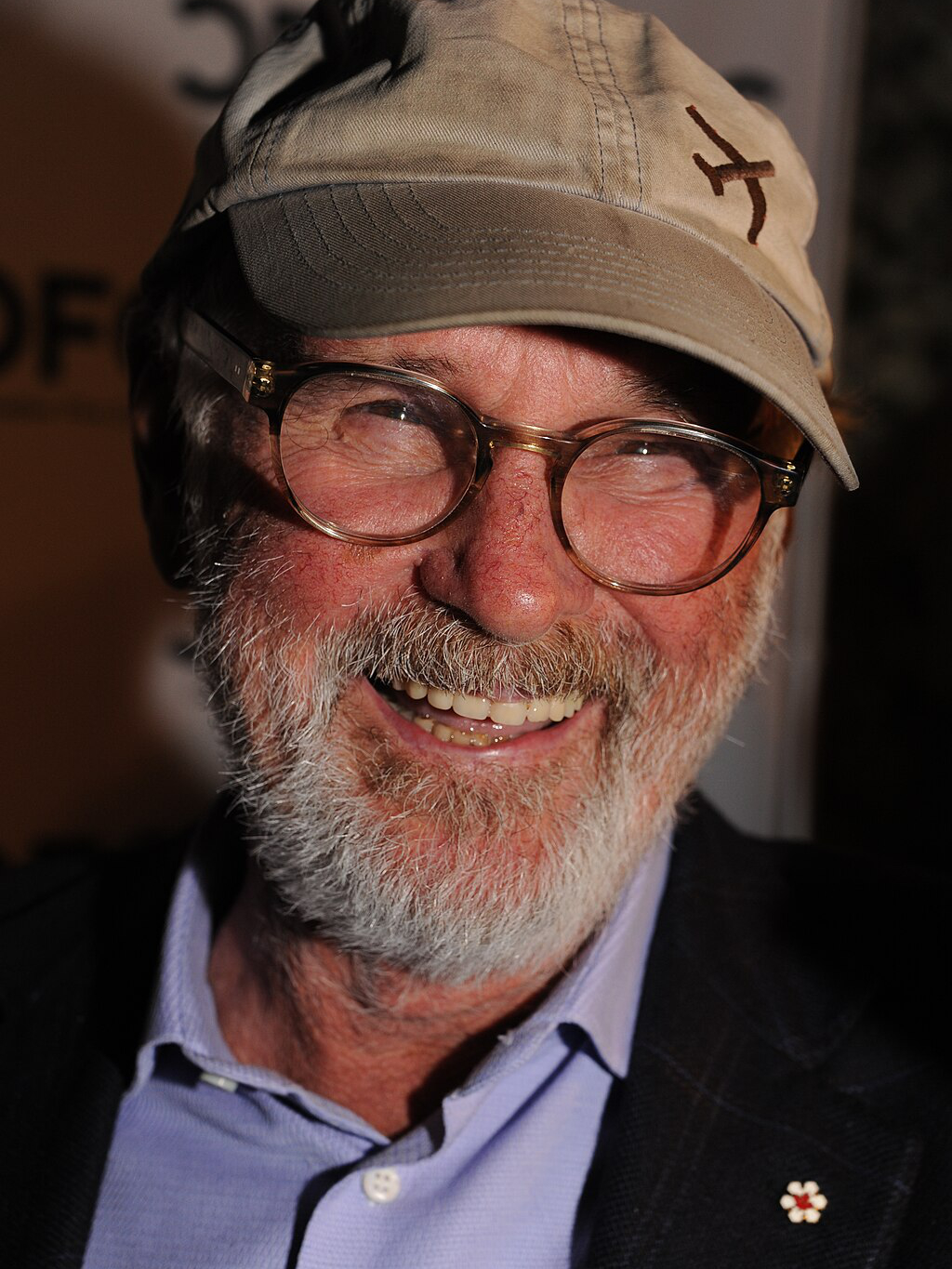
Norman Jewison, 2012. (Canadian Film Centre / Mark Sullivan, CC BY 2.0, via Wikimedia Commons)
Director, producer
After serving in the Royal Canadian Navy in World War II and earning a degree from Victoria College at the University of Toronto, Norman Jewison (1926–2024) began working in television, first in London and then at Canada’s CBC Television. In 1958 he moved to New York to work for CBS, where he directed a number of successful TV specials.
Jewison soon began directing feature films, beginning with the Tony Curtis comedy Forty Pounds of Trouble (1962) and including the acclaimed drama The Cincinnati Kid (1965), starring Steve McQueen. His 1966 film, The Russians Are Coming, The Russians Are Coming, which he both produced and directed, was nominated for four Academy Awards, including Best Picture. Jewison next directed In the Heat of the Night (1967), which won five Oscars, including Best Picture, and earned him a Best Director nomination.
Jewison continued to direct and produce many notable and successful movies into the early 2000s, often dealing with timely and controversial subjects. He received additional Oscar nominations for Fiddler on the Roof (1971) (Best Picture, Best Director), A Soldier’s Story (1984) (Best Picture), and the romantic box office hit Moonstruck (1987) (Best Picture, Best Director).
In 1988, Jewison founded the Canadian Film Centre to develop Canadian talent in film, television, and new media. He was recognized with lifetime achievement awards by both the Directors Guild of Canada and the Directors Guild of America.
Warren Beatty, 1999
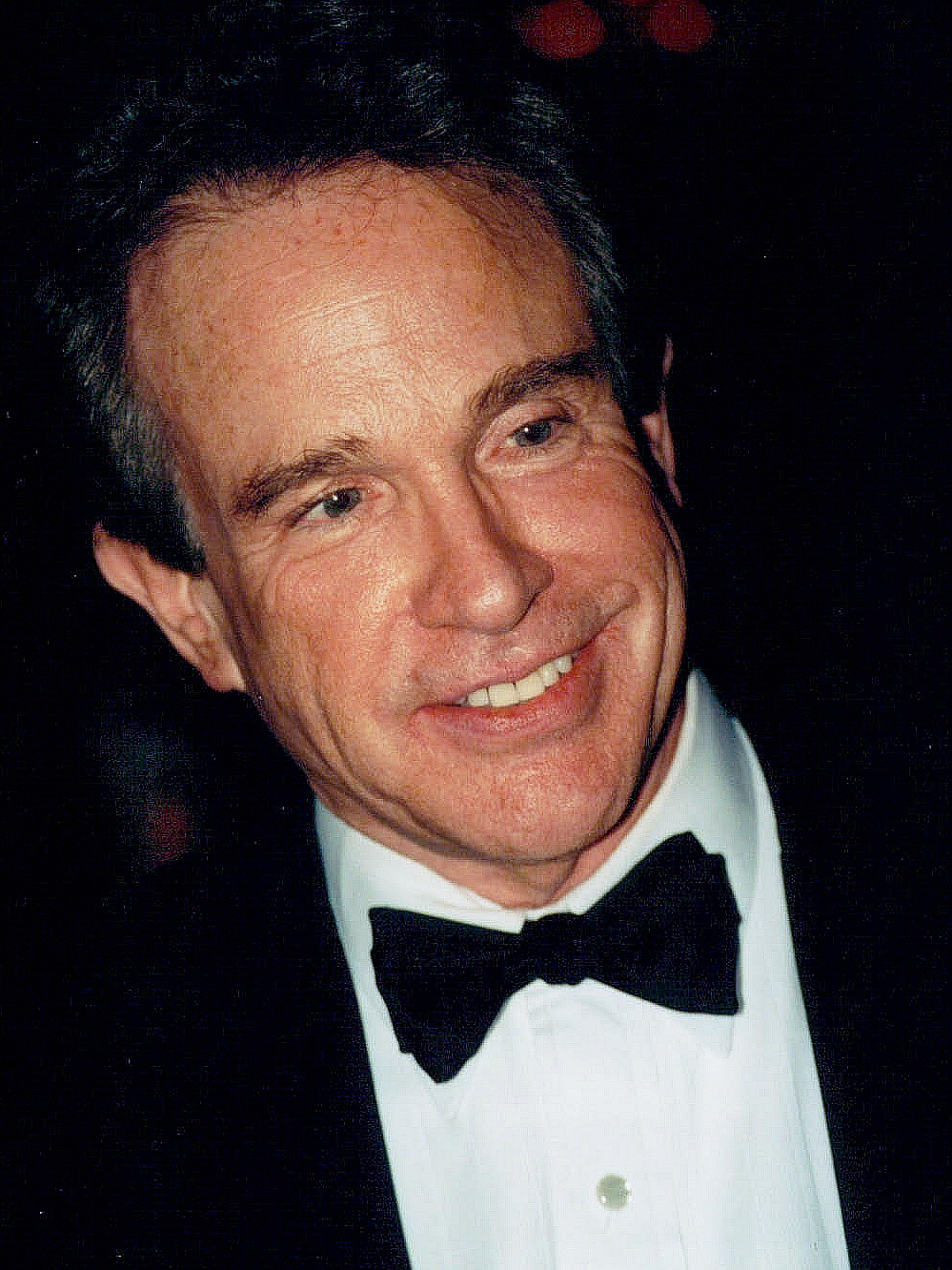
Warren Beatty, 2001. (John Matthew Smith, CC BY-SA 2.0, via Wikimedia Commons)
Actor, producer, director, screenwriter
Warren Beatty (b. 1937) was a Golden Globe® nominee for Best Actor in a Motion Picture Drama for his first film, Splendor in the Grass (1961). In 1967, he produced and starred in the ground-breaking Bonnie and Clyde. Beatty received two Oscar nominations for Bonnie and Clyde, for Best Picture as the producer and for Best Actor in a Leading Role. He received the same two nominations for his 1991 movie Bugsy.
Beatty is one of only two people—Orson Welles is the other—to receive Oscar nominations in the Best Picture, Actor, Director, and Screenplay categories for a single film. He achieved this feat with both Heaven Can Wait (1978) and Reds (1981) and won the Best Director award for Reds. He received two other Oscar nominations, both for Best Original Screenplay, for Shampoo (1975) and Bulworth (1999).
Beatty has received substantial recognition from other entertainment industry organizations, including lifetime achievement awards. In 2007, the Hollywood Foreign Press Association presented him with its Cecil B. DeMille Award, and in 2008, the American Film Institute honored him with its Life Achievement Award.
Dino De Laurentiis, 2000
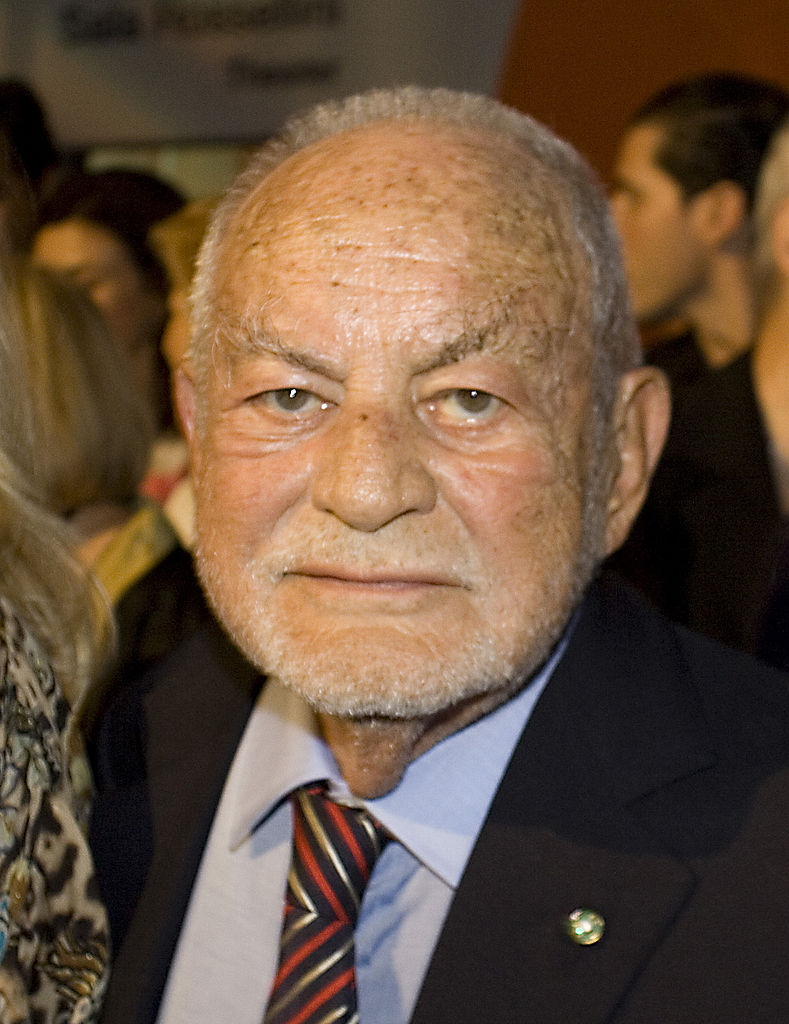
Dino De Laurentiis. (Justin Sewell, CC BY 2.0, via Wikimedia Commons)
Producer
Born in Naples, Agostino “Dino” De Laurentiis (1919–2010) had an early love of movies. He studied at the Italian national film school Centro Sperimentale di Cinematografia. After World War II, he set up his own studio and produced neorealist films, including the critically praised Bitter Rice (1949). He produced Federico Fellini’s classic La Strada (1954), with co-producer Carlo Ponti, and Nights of Cabiria (1956), both of which won the Oscar for Best Foreign Language Film.
In 1976, De Laurentiis relocated to the United States and set up a studio in North Carolina. He made numerous successful and acclaimed films, including Serpico (1973), Death Wish (1974), Ragtime (1981), Conan the Barbarian (1982), and Blue Velvet (1986). De Laurentiis also produced cult favorite Barbarella (1961), a number of adaptations of Stephen King’s books, and many other diverse titles over a career that spanned more than 60 years.
John Calley, 2009
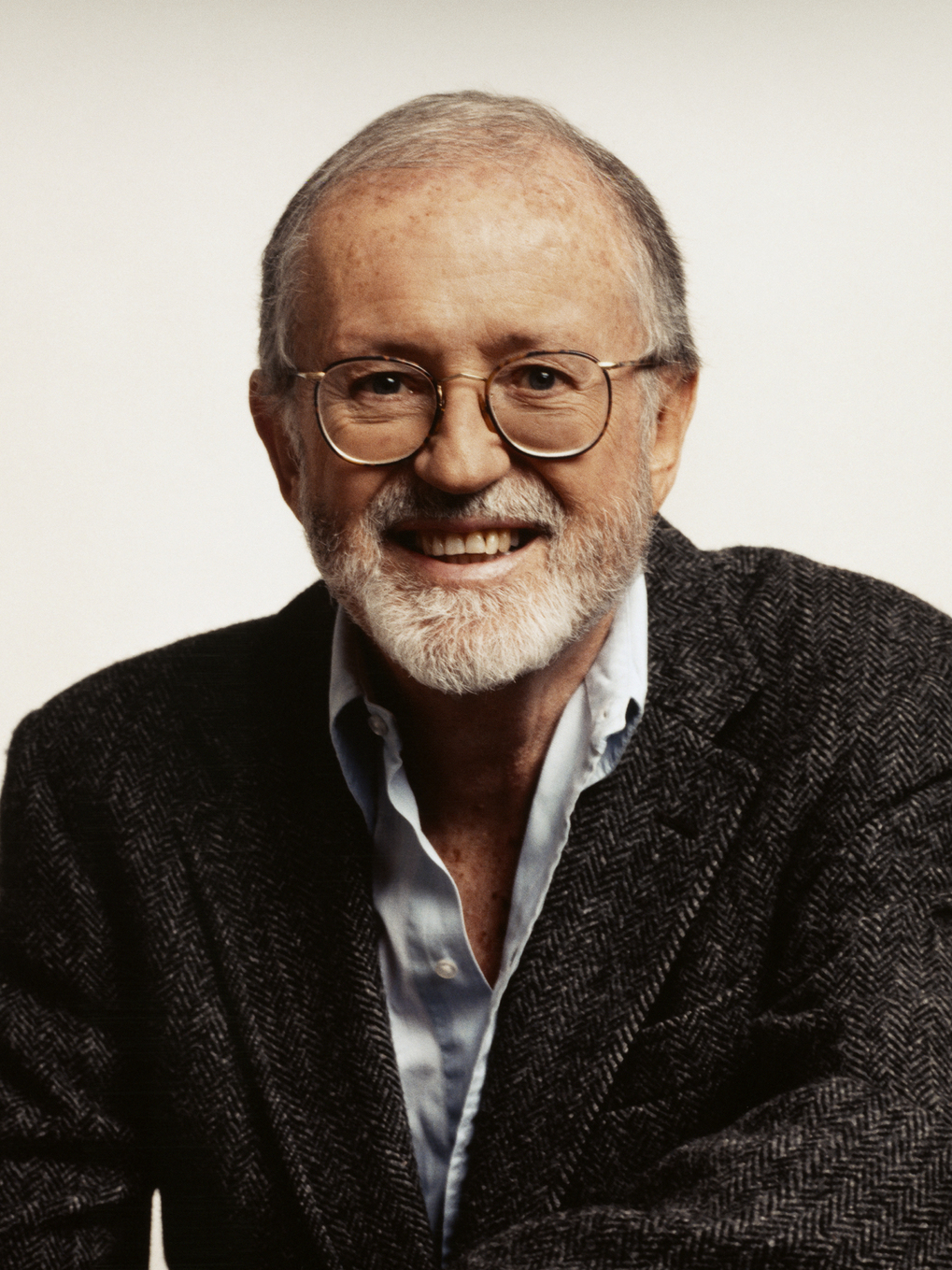
John Calley. (IMDb)
Studio executive, producer
After ten years in television, John Calley (1930–2011) began his movie career in 1960 as an executive vice president at Filmways, Inc. In 1969 he became executive vice president in charge of production at Warner Bros., and in 1975 he was named president. At Warner Bros. he oversaw the production of some 120 movies, including Woodstock (1970), Mean Streets (1973), The Exorcist (1973), All the President’s Men (1976), and Chariots of Fire (1981), to name just a few.
Calley left Warner Bros. and the movie business in 1980, staying away for a decade before returning as a producer. The 1993 film The Remains of the Day earned eight Oscar nominations, including a Best Picture nomination for Calley. In 1993, he took over the struggling United Artists and turned it around, then became president of Sony Pictures Entertainment in 1996. In 2003, Calley again returned to producing, with The Da Vinci Code (2006) and Angels & Demons (2009) among his movies.
Francis Ford Coppola, 2010
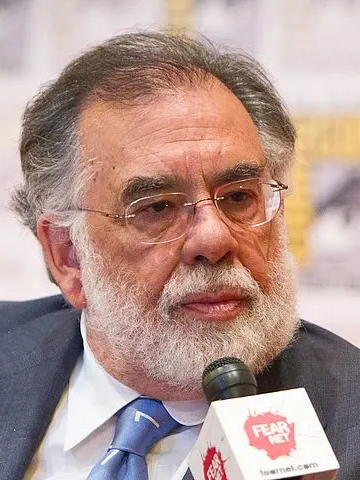
Francis Ford Coppola, 2011. (Gerald Geronimo, CC BY-SA 2.0, via Wikimedia Commons)
Director, producer, screenwriter
After earning a degree from Hofstra University and doing graduate work in filmmaking at UCLA, Francis Ford Coppola (b. 1939) began his film career in the early 1960s as an assistant to prolific producer-director Roger Corman. He also wrote or co-wrote a number of screenplays, winning the Oscar for Writing for 1970’s Best Picture, Patton.
In 1969, Coppola established the independent film studio American Zoetrope with George Lucas. Their second collaboration, American Graffiti (1973), with Coppola producing and Lucas directing, was nominated for five Academy Awards, including Best Picture.
In 1972, Coppola directed and co-wrote The Godfather, one of the most popular movies of all time. The Godfather won three Oscars, including Best Picture and Best Adapted Screenplay, and was nominated for eight others. Coppola won three more Academy Awards for The Godfather, Part II (1974): Best Picture, Directing, and Writing. He was nominated for the same three Oscars for Apocalypse Now (1979) and received two nominations for The Conversation (1974) and two for The Godfather, Part III (1990).
To date, Coppola has some 30 writing credits and almost 40 directing credits on his resumé, and he has produced over 70 films and TV series. In addition to numerous other honors, he received a Lifetime Achievement Award from the Directors Guild of America in 1998.
Kathleen Kennedy and Frank Marshall, 2018
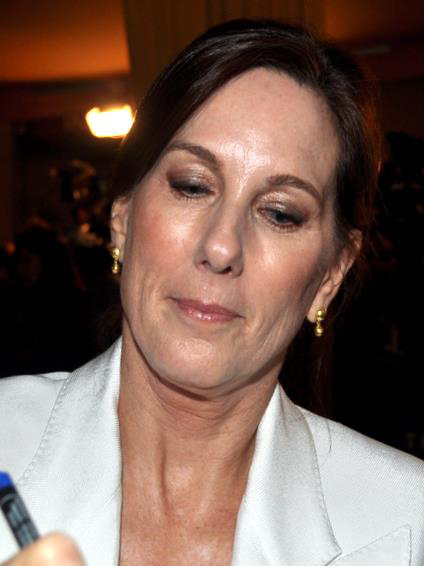
Kathleen Kennedy, 2011. (Georges Biard (cropped), CC BY-SA 3.0, via Wikimedia Commons)
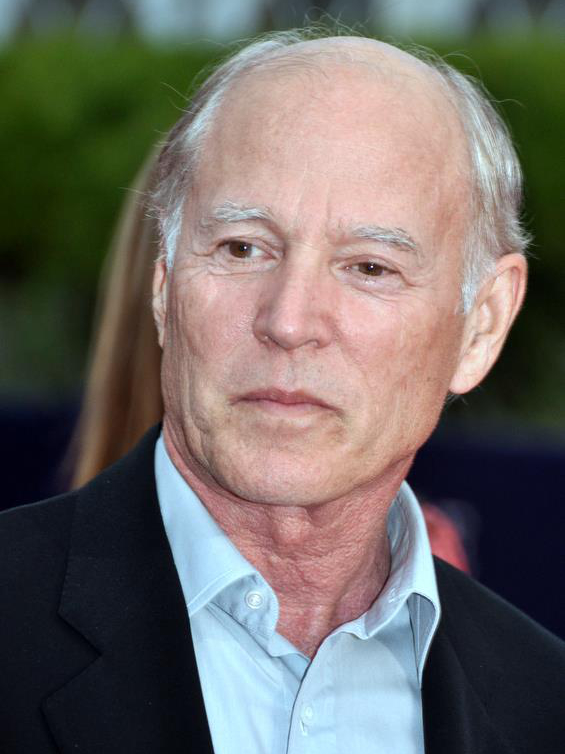
Frank Marshall, 2012. (Georges Biard, CC BY-SA 3.0, via Wikimedia Commons)
Producers, executives
In 2018, for the first time in its history, the Academy awarded the Thalberg Award to a woman. Kathleen Kennedy (b. 1953) received the honor with her producing partner and husband Frank Marshall (b. 1946).
Marshall got his first movie credit on Peter Bogdanovich’s first film, Targets (1968). Kennedy began her career in television and got her first movie job on Steven Spielberg’s 1979 film 1941. In 1981, the duo co-founded the production company Amblin Entertainment with Spielberg. After leaving Amblin, Kennedy and Marshall formed the Kennedy/Marshall company in 1992. In 2012, Kennedy became the president of Lucasfilm Ltd.
Together or separately, Kennedy and Marshall have received nine Best Picture nominations from the Academy. Marshall got his first nomination for Raiders of the Lost Ark (1981) (on which Kennedy was credited as an associate to director Spielberg). Kennedy followed a year later with a nomination for E.T. The Extra-Terrestrial. Their first shared nomination was for 1985’s The Color Purple.
Kennedy/Marshall produced four Best Picture nominees: The Sixth Sense (1999), Seabiscuit (2003), Munich (2005), and The Curious Case of Benjamin Button (2008). Kennedy received two additional nominations for War Horse (2011) and Lincoln (2012). Both Kennedy and Marshall have won and been nominated for numerous other industry awards. With multiple ongoing projects, it’s likely that they will add to their stellar resumés in the coming years.
Who Will Join the Ranks of Irving Thalberg Award Winners?
Until 2018, all Thalberg Award recipients had been men. That was certainly not surprising in the earlier years of the movie business when movie studios were exclusively run by men. Men still hold most of the power in the industry, but Kathleen Kennedy’s award may indicate that the industry is beginning to open up.
Many other talented women are doing excellent creative work in the movie business. And no people of color have yet been honored with the Thalberg Award. Let’s hope that in the not-too-distant future, the roster of Thalberg Award recipients and other Academy honorees will be increasingly diverse.
Copyright © Brian Lokker 2012, 2023. An earlier version of this article was published on HubPages.com in 2012 and was subsequently featured on ReelRundown.com.




